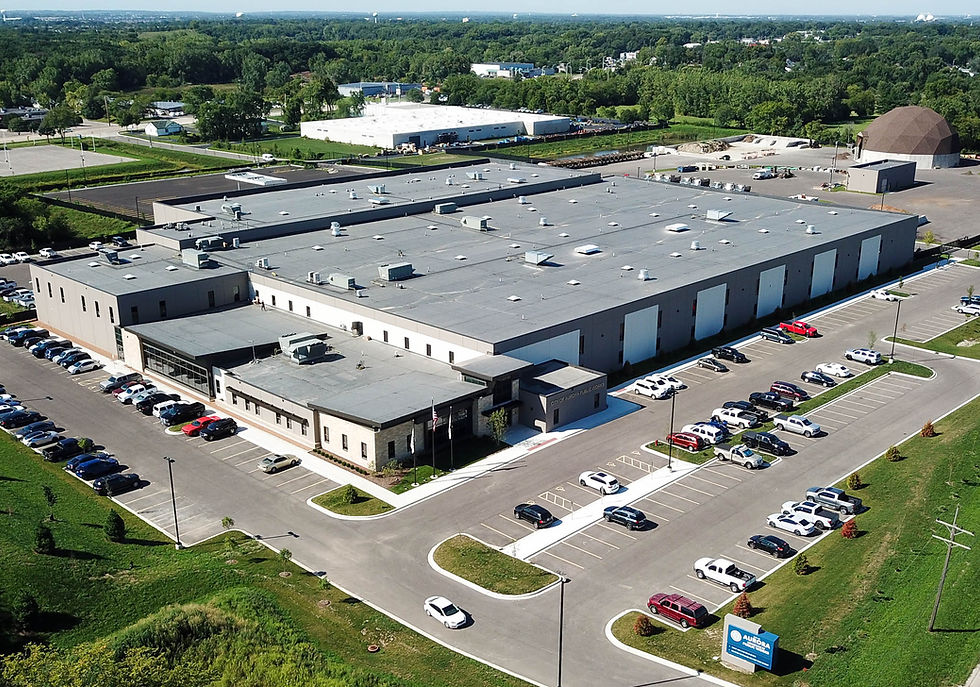Understanding the Cost-Benefit Analysis of Precast Concrete
- Dukane Precast
- Aug 26, 2024
- 3 min read

Cost is always a critical factor when it comes to construction projects. However, focusing solely on upfront expenses can sometimes lead to overlooking long-term savings and benefits. Precast concrete is one material that often shines in a comprehensive cost-benefit analysis, offering a unique combination of initial affordability and long-term value. In this blog, we'll explore why precast concrete is a smart financial choice for construction projects of all sizes.
Upfront Costs vs. Long-Term Savings
One of the first things that come to mind when considering precast concrete is the initial investment. While it's true that the upfront costs for precast concrete can be competitive, especially when compared to traditional cast-in-place methods, the real value becomes apparent when you consider the long-term savings.
Precast concrete components are manufactured off-site in a controlled environment, which significantly reduces the potential for on-site delays and costly errors. This streamlined process leads to faster construction timelines, meaning lower labor costs and earlier project completion. Additionally, the precision of factory production ensures minimal material waste, further reducing costs.
Durability and Maintenance
Precast concrete is renowned for its durability. It’s designed to withstand harsh weather conditions, heavy loads, and even the test of time. This inherent strength translates into fewer repairs and maintenance needs over the lifespan of a building or infrastructure project.
When you compare precast concrete to other materials, the long-term maintenance costs are often significantly lower. For example, materials like wood or steel may require regular treatments, coatings, or replacements to maintain their integrity, especially in challenging environments. Precast concrete, on the other hand, maintains its strength and appearance with minimal intervention, saving money on upkeep over the years.
Energy Efficiency and Sustainability
Energy efficiency is another area where precast concrete can offer significant cost benefits. Due to its high thermal mass, precast concrete can help regulate indoor temperatures, reducing the need for heating and cooling. This energy efficiency can lead to lower utility bills over the life of the building, adding another layer of cost savings.
Moreover, precast concrete is a sustainable building material. It can be produced using recycled materials, and its durability means it has a longer life cycle, reducing the need for replacement and further resource consumption. For projects seeking LEED certification or other sustainability benchmarks, precast concrete can contribute valuable points, potentially leading to tax incentives or other financial benefits.
Predictable Budgeting
One of the challenges in construction is dealing with unexpected costs. Whether it's a delay in materials, weather-related setbacks, or on-site issues, unplanned expenses can quickly add up. Precast concrete offers a solution to this problem through its predictability.
Because precast components are manufactured in a controlled environment, there's a lower risk of delays caused by weather or other on-site issues. This predictability extends to the budgeting process. With precast concrete, project managers can more accurately estimate costs, reducing the likelihood of budget overruns. This financial predictability is a major advantage, particularly for large-scale projects with tight margins.
Comparative Analysis: Precast vs. Other Materials
When comparing precast concrete to other construction materials like steel, wood, or traditional cast-in-place concrete, the cost-benefit analysis often tilts in favor of precast. While the initial costs may be comparable or even slightly higher in some cases, the long-term benefits—such as reduced maintenance, enhanced durability, and lower energy consumption—make precast concrete a more cost-effective option over time.
For instance, steel structures may be prone to rust or corrosion, particularly in coastal areas, leading to costly repairs or replacements. Wood structures, while initially cheaper, require regular treatments to prevent rot, pest infestations, and other issues. Precast concrete, with its resistance to such problems, offers a lower total cost of ownership.
Conclusion: A Wise Investment
In conclusion, while the initial costs of precast concrete are certainly competitive, the true value of this material lies in its long-term benefits. From reduced maintenance and energy savings to predictable budgeting and sustainability, precast concrete offers a compelling financial case for any construction project.
At Dukane Precast, we’re committed to helping our clients understand the full spectrum of benefits that precast concrete can offer. Whether you’re planning a new building, infrastructure project, or a smaller-scale development, considering the long-term cost benefits of precast concrete could be one of the smartest decisions you make.
If you're interested in learning more about how precast concrete can save you money in the long run, contact Dukane Precast today. Our team of experts is here to guide you through every step of the process, ensuring that your project is both cost-effective and built to last.





Comments